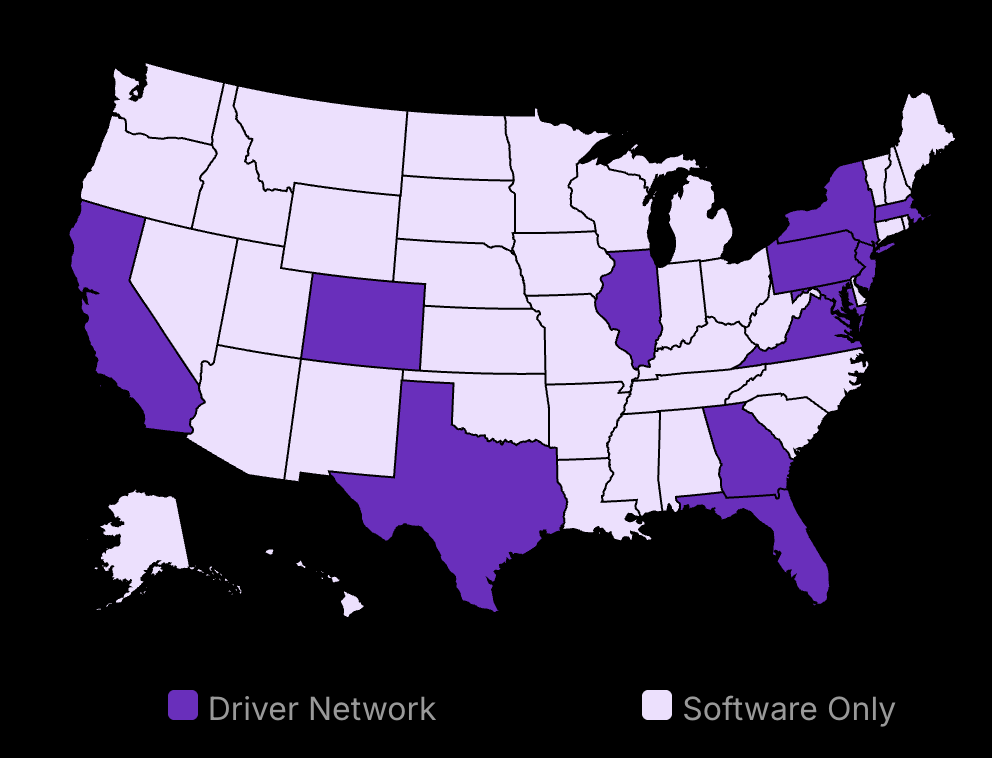Juggling employee schedules while keeping your business running smoothly can feel like a high-stakes balancing act.
But what if there was a way to streamline the process, saving you time and headaches?
In this comprehensive guide, we’ll dive into the nitty-gritty of employee scheduling, exploring best practices, common challenges, and how the right software can be a game-changer.
Whether you’re a seasoned business owner or just starting out, you’ll walk away with actionable insights to optimize your scheduling and keep your team happy.
So, let’s ditch the scheduling stress and unlock a new level of efficiency for your business.

Lower your delivery costs by 23%
How we reduce costs:
- No delivery vehicle expenses
- Optimized local routes
- Pay-per-delivery model
- Average 23% delivery cost reduction
The Basics of Employee Scheduling
-
Employee management of scheduling is the process of creating and managing work schedules for employees
-
Effective scheduling balances business needs with employee availability and preferences
-
Various types of scheduling include fixed, flexible, and rotating schedules
Employee scheduling is a critical aspect of business operations, particularly in industries such as retail, hospitality, healthcare, and manufacturing. It involves creating and managing work schedules for employees, assigning shifts, and ensuring that the business has adequate staffing levels to meet its operational requirements.
At its core, the best employee scheduling ever is about balancing the needs of the business with the availability and preferences of employees. Managers must consider factors such as business hours, peak periods, customer demand, and employee skills when creating schedules. They must also take into account employee requests for time off, shift preferences, and any legal or contractual obligations related to work hours and overtime.
Types of Employee Scheduling
There are several common types of employee scheduling, each with its own advantages and disadvantages. The most appropriate and best employee scheduling app or method will depend on the nature of the business, the preferences of employees, and the level of flexibility required.
Fixed Scheduling
Fixed scheduling, also known as set scheduling, involves a team schedule with employees working the same shifts on a regular basis. For example, an employee may work Monday through Friday from 9 am to 5 pm every week. This type of scheduling is predictable and easy to manage, making it ideal for businesses with stable workloads and employees who prefer a consistent schedule.
However, fixed scheduling may not be suitable for businesses with fluctuating demand or employees who require more flexibility. It can also lead to challenges in covering shifts if an employee is absent or unavailable.
Flexible Scheduling
Flexible scheduling allows for greater variability in employee work hours and shifts. Schedules are created based on business needs and employee availability, and may change from week to week. This type of scheduling tool is more adaptable to changes in demand and can accommodate employee preferences for work-life balance.
However, flexible scheduling can be more complex to manage and may require more frequent communication between managers and employees. It can also lead to inconsistent work hours for employees, which may be challenging for those with commitments outside of work.
Rotating Scheduling
Rotating shift scheduling involves employees working different shifts on a rotating basis. For example, an employee may work the morning shift for one week, the afternoon shift the next week, and the evening shift the following week. This type of scheduling ensures a fair distribution of desirable and undesirable shifts among employees and can help prevent burnout.
However, rotating schedules can be disruptive to employees’ personal lives and may lead to fatigue or difficulty adjusting to new sleep patterns. It can also be more challenging to manage, as managers must ensure that employees are adequately trained and prepared for each shift. To better understand the advantages of rotating schedules, it’s beneficial to explore how they can be effectively integrated into various business models. Adopting rotating shifts can enhance flexibility and fairness in scheduling, which might improve overall employee satisfaction and engagement. For more insights, check out this article on the benefits of implementing rotating shifts in any business.
The Importance of Effective Employee Scheduling
Effective employee scheduling is essential for businesses to operate efficiently, maintain high levels of customer service, and keep employees engaged and satisfied. Some of the key benefits of effective scheduling include:
-
Improved productivity: By ensuring that the right employees are scheduled at the right times, businesses can optimize their operations and improve overall productivity.
-
Enhanced customer service: Adequate staffing levels help businesses provide timely and attentive service to customers, leading to higher satisfaction and loyalty.
-
Increased employee satisfaction: When schedules are fair, predictable, and accommodate employee preferences, workers are more likely to be engaged and satisfied with their jobs.
-
Better labor cost management: Effective scheduling helps businesses avoid overstaffing or understaffing, which can lead to increased labor costs or lost sales opportunities.
-
Compliance with labor laws: Proper scheduling ensures that businesses are complying with relevant labor laws and regulations, such as those related to overtime, breaks, and time off.
Best Practices for Employee Scheduling
To ensure effective employee scheduling, businesses should follow best employee and practices such as:
-
Forecasting Labor Needs: Use historical data and anticipated demand to forecast labor needs accurately.
-
Collecting Employee Availability: Collect employee availability and time-off requests in advance to ensure that schedules are fair and accommodate employee preferences.
-
Creating a Schedule: Create a schedule that meets business needs and accommodates employee preferences, considering factors such as peak periods, customer demand, and employee skills.
-
Communicating the Schedule: Communicate the schedule to employees in advance and make adjustments as needed to ensure that employees are aware of their shifts and any changes.
-
Tracking Employee Hours: How to track employee hours? Manage any changes or issues that arise to ensure compliance with labor laws and regulations.
By following these best practices, businesses can ensure that their employee scheduling is effective, efficient, and beneficial for both the business and its employees.
Benefits of Using Employee Scheduling Software
Streamlines the Scheduling Process
Employee scheduling software automates the creation and distribution of schedules, reducing the time spent on manual scheduling tasks by up to 95%. This allows managers to focus on more important aspects of their business, such as strategy and growth. Learn the secrets to selecting the perfect software for scheduling shifts that aligns with the specific demands of your organization.
The software takes into account employee availability, skills, and preferences, ensuring that the right person is assigned to the right shift. This reduces scheduling conflicts and last-minute changes, which can be disruptive to both employees and the business.
Manual scheduling is prone to errors, such as double-booking employees or assigning them to shifts they are not available for. Employee scheduling software eliminates these errors by automatically checking for conflicts and ensuring that all open shifts are properly covered.
This not only saves time but also reduces the risk of understaffing or overstaffing, which can have a significant impact on customer service and revenue.
Improves Communication and Collaboration
Employee scheduling software allows employees to view their schedules, request time off, and swap shifts online. This eliminates the need for back-and-forth emails or phone calls, which can be time-consuming and confusing.
The software also facilitates real-time updates and notifications, ensuring that everyone is on the same page. Managers can quickly communicate schedule changes or important announcements, while employees can easily request time off or notify their manager of any issues.
By giving employees more control over their schedules, employee scheduling software encourages engagement and ownership. Employees feel more valued and respected when their preferences and availability are taken into account.
This can lead to higher job satisfaction and lower turnover rates, which can save businesses thousands of dollars in recruitment and training costs.
Enhances Employee Satisfaction and Retention
Employee engagement software, particularly in the form of scheduling tools, accommodates employee preferences and availability, promoting a better work-life balance. This is particularly important for businesses with a diverse workforce, including students, parents, and caregivers.
By reducing scheduling conflicts and last-minute changes, the software helps employees plan their personal lives around their work schedules. This can lead to higher job satisfaction and lower stress levels, which can have a positive impact on employee performance and customer service.
Supports Fair and Equitable Scheduling Practices
Employee scheduling software ensures that schedules are created based on objective criteria, such as skills, availability, and performance. This eliminates the risk of favoritism or discrimination, which can lead to resentment and turnover.
The software also supports compliance with local and state labor laws, such as predictive scheduling and overtime regulations. This can help businesses avoid costly fines and legal issues.
Provides Valuable Insights and Analytics
Employee scheduling software provides real-time data and analytics on labor costs, time tracking, employee performance, and scheduling patterns. This allows managers to make data-driven decisions and optimize their workforce.
For example, managers can identify peak hours and adjust staffing levels accordingly, ensuring that they have the right number of employees on hand to meet customer demand. They can also track employee attendance and punctuality, identifying potential issues before they become a problem.
Enables Continuous Improvement
By providing a centralized platform for scheduling and communication, employee scheduling software enables continuous improvement. Managers can easily track key metrics and identify areas for optimization, such as reducing overtime or improving shift coverage.
The software also allows for easy experimentation and testing of new scheduling strategies, such as staggered shifts or flexible schedules. This can help businesses stay agile and adapt to changing market conditions.
Employee Scheduling Methods
Manual Scheduling
Manual scheduling involves creating employee schedules using pen and paper or spreadsheet software like Microsoft Excel or Google Sheets. This method is often used by small businesses with a limited number of employees and straightforward scheduling needs. However, adding columns manually can be as tedious as routing deliveries without software.
Advantages of Manual Scheduling
– Low cost: Manual scheduling requires no additional software or hardware investments.
– Flexibility: Managers can easily make last-minute changes to the schedule based on employee requests or business needs.
– Simplicity: Manual scheduling is easy to understand and implement, especially for businesses with few employees and consistent schedules.
Disadvantages of Manual Scheduling
– Time-consuming: Creating schedules manually can be a lengthy process, especially as the number of employees and scheduling constraints increase.
– Error-prone: Manual data entry and calculations can lead to scheduling errors, such as double-booking employees or leaving shifts understaffed.
– Limited visibility: Sharing and accessing manual schedules can be challenging, particularly for employees who work remotely or have limited access to physical copies of the schedule.
Automated Scheduling
Automated scheduling involves using specialized software to generate employee schedules based on predefined rules, constraints, and business requirements. This method is increasingly popular among medium to large businesses with complex scheduling needs.
Advantages of Automated Scheduling
– Efficiency: Automated scheduling software can create optimized schedules in a matter of minutes, saving managers significant time and effort.
– Accuracy: By automatically applying scheduling rules and constraints, automated scheduling reduces the risk of errors and ensures compliance with labor laws and company policies.
– Real-time updates: Automated scheduling software allows managers and employees to access and modify schedules in real-time, improving communication and collaboration.
Disadvantages of Automated Scheduling
– Cost: Implementing and maintaining automated scheduling software can be expensive, particularly for small businesses with limited budgets.
– Learning curve: Managers and employees may need time to learn and adapt to the new employee scheduling app and system, which can temporarily disrupt operations.
– Reduced flexibility: Automated scheduling may not always account for the nuances of employee preferences or last-minute changes, which can lead to dissatisfaction among staff.
For a deeper dive into automated scheduling, consider reading “The Ultimate Guide to Workforce Management” by Julie-Ann Amos, which provides a comprehensive overview of automated scheduling techniques and best practices.
Hybrid Scheduling
Hybrid scheduling combines elements of manual and automated scheduling methods, allowing managers to leverage the benefits of both approaches. This method is well-suited for businesses that require a balance between efficiency and flexibility.
Advantages of Hybrid Scheduling
– Best of both worlds: Hybrid scheduling allows managers to automate routine scheduling tasks while retaining the ability to make manual adjustments as needed.
– Improved employee satisfaction: By incorporating employee preferences and feedback into the scheduling process, hybrid scheduling can lead to higher levels of job satisfaction and retention.
– Scalability: Hybrid scheduling can be adapted to the changing needs of a growing business, allowing for a gradual transition from manual to automated methods.
Disadvantages of Hybrid Scheduling
– Complexity: Implementing a hybrid scheduling system can be complex, requiring careful planning and coordination between manual and automated processes.
– Inconsistency: If not managed properly, hybrid scheduling can lead to inconsistencies in the scheduling process, which can confuse employees and disrupt operations.
– Dependence on technology: Hybrid scheduling still relies on automated software components, which can be subject to technical issues or outages.
Employee Scheduling Best Practices
Establish Clear Scheduling Policies
Creating a set of well-defined scheduling policies is the foundation for effective employee scheduling. Start by defining rules for shift assignments, time-off requests, and schedule changes. These policies should be fair, consistent, and aligned with your business goals.
Once you have established your scheduling policies, it’s crucial to communicate them clearly to your employees. Make sure everyone understands the rules and expectations surrounding their work schedules. Consider hosting a meeting or workshop to explain the policies in detail and answer any questions your employees may have. Providing a written copy of the policies in an employee handbook or online portal can also serve as a helpful reference.
Consistency is key when applying scheduling policies. Ensure that managers and supervisors are following the rules fairly and evenly across all employees. Inconsistent application of policies can lead to confusion, frustration, and even legal issues.
Consider Employee Preferences and Availability
Effective employee scheduling takes into account both the needs of the business and the preferences of employees. Collect input from your staff on their preferred shifts and availability. This can be done through surveys, one-on-one conversations, or by using a scheduling app or software that allows employees to submit their preferences electronically. Furthermore, offering flexible work hours is crucial for accommodating diverse employee needs and improving overall job satisfaction. For insights on why these flexible hours are essential for a happy workforce, check out this post about the importance of flexible work hours.
When gathering employee preferences, consider factors such as:
-
Preferred shift times (e.g., morning, afternoon, evening)
-
Desired days off
-
Availability restrictions (e.g., school schedules, family obligations)
-
Interest in working overtime or taking on additional shifts
While it may not always be possible to accommodate every employee’s preferences, making an effort to consider their input can improve job satisfaction and retention. Happy employees are more likely to be productive and provide excellent customer service.
Of course, employee preferences must be balanced with the requirements of your business. Analyze historical data to identify peak periods, slow times, and staffing needs for each shift. Use this information to create schedules that ensure you have the right number of employees with the necessary skills available when you need them most.
Plan Ahead and Allow for Flexibility
Creating employee schedules well in advance allows for better planning and reduces last-minute scrambling. Aim to publish schedules at some time clock least 1-2 weeks ahead of time, giving employees ample notice to plan their personal lives around their work commitments. Hourly planner templates offer a straightforward solution for employee schedules. These templates provide a structured approach to scheduling, ensuring clarity and consistency for all team members.
When building schedules, it’s important to build in contingencies for unexpected absences or changes in demand. Cross-train employees to perform multiple roles so they can fill in for absent co-workers or help out during busy periods. Consider having a pool of on-call staff who can be brought in on short notice to cover shifts as needed.
While planning ahead is essential, it’s equally important to allow for flexibility. Life happens, and employees may need to request schedule changes due to emergencies, illness, or other unforeseen circumstances. Have a clear process in place for employees to communicate these needs and for managers to find suitable replacements.
Flexibility can also mean adjusting schedules based on real-time business needs. If customer traffic is slower than expected, consider sending some employees home early to reduce labor costs. Conversely, if you find yourself short-staffed during a busy period, be prepared to call in additional help or offer overtime to available employees.
By establishing clear policies, considering employee preferences, planning ahead, and allowing for flexibility, you can create employee schedules that optimize productivity, customer service, and employee satisfaction. In the next section, we’ll explore common challenges that can arise in employee scheduling and provide solutions to overcome them.
Common Employee Scheduling Challenges and Solutions
Last-Minute Schedule Changes
Last-minute schedule changes can wreak havoc on your business operations. Employees calling in sick, family emergencies, or unexpected events can leave you scrambling to fill shifts. To mitigate these challenges:
-
Implement a clear system for employees to report absences as soon as possible. This can include a dedicated phone number, email, or messaging platform. Encourage employees to give as much notice as possible, even if it’s just a few hours before their shift.
-
Create a pool of on-call staff who are willing and able to fill in at short notice. These can be part-time employees, freelancers, or even full-time staff who are open to taking on extra shifts. Maintain an up-to-date list of their availability and contact information.
Cross-Training Employees
Cross-training your employees can significantly reduce the impact of last-minute schedule changes. By teaching your staff to perform multiple roles, you can quickly fill gaps when someone is absent. Implement regular cross-training sessions to ensure your team is versatile and adaptable. For example, Acme Markets, a leading retailer, emphasizes employee development and cross-training to ensure that employees are prepared to handle various tasks and responsibilities.
Understaffing and Overstaffing
Having too few or too many employees on a shift can lead to poor customer service, overworked staff, and wasted resources. To find the right balance:
-
Use historical sales data, to predict staffing needs. Analyze sales figures, customer traffic, and other relevant metrics from previous years to identify patterns and trends. This information can help you forecast how many employees you’ll need for each shift.
-
Regularly review and adjust schedules based on actual demand. Monitor your staffing levels in real-time and make adjustments to auto scheduling as necessary. If you notice that certain shifts consistently have too many or too few employees, update your schedules accordingly. According to Shiftboard, automated employee scheduling software can help reduce labor costs by 23% on average and improve manager productivity by 30%.
Flexible Scheduling
Offering flexible scheduling options can help you optimize your staffing levels. Consider allowing employees to trade shifts, work split shifts, or take on part-time roles. This can attract a wider pool of candidates and help you maintain optimal coverage during peak periods. In fact, 75% of employees consider flexibility a key factor in their job satisfaction.
Managing Time-Off Requests
Juggling multiple time-off requests can be challenging, especially during popular vacation periods. To ensure fairness and maintain adequate staffing:
-
Establish clear guidelines for submitting and approving time-off requests. Set deadlines for when requests must be submitted and communicate your approval process to your team. Consider factors like seniority, first-come-first-served, or rotating priority when evaluating requests.
-
Use software to track accrued time off and ensure fair distribution. Employee scheduling software can help you manage vacation days, sick leave, and personal time. These tools can also help you identify potential conflicts and ensure that time off is allocated fairly among your team. For instance, Acme Markets uses an online automated, HR software and service system, myACI, to manage employee benefits and time-off requests.
Streamline Your Business with Employee Scheduling Software
Employee scheduling is a critical aspect of running a successful business. By implementing effective scheduling strategies and utilizing the right tools, you can optimize your workforce, improve communication, control labor costs and boost employee satisfaction.
Investing in a comprehensive employee scheduling software like Acme can revolutionize the way you manage your team. With features like automated schedule generation, real-time updates, and mobile access, you’ll be able to create efficient schedules that align with your business needs while accommodating your employees’ preferences.
Are you ready to take your employee scheduling to the next level? Sign up for a free trial of Acme Employee Scheduling Software today and experience the difference for yourself. Say goodbye to the hassles of manual employee scheduling apps and hello to a more streamlined, productive workforce management to schedule employees.




























